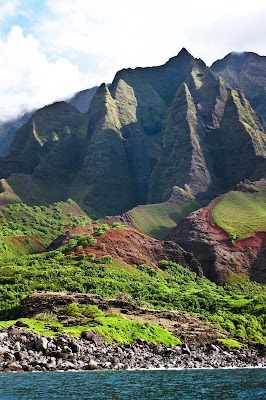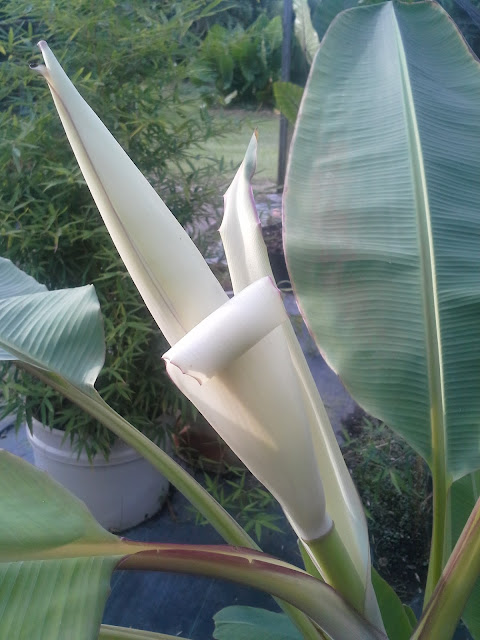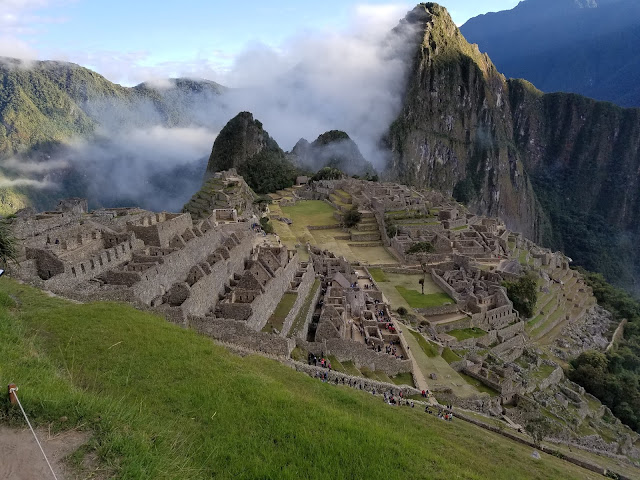
Street in the old town near hotels/hostals/beds and breakfasts within walking distance of the most fascinating ruins the most high minded of men could imagine.
This place is Uplifting Cousin, and I want you to go. So get off it and online to see just how affordable Peru travel is. Gas is about $1 US per gallon here, so guess what, taxis and buses are cheap. WiFi is decent and almost always free at hostels and hotels although service is sometimes spotty or disrupted in smaller towns. You may have to go across the room or street and try again. Check with your hotel for taxi prices. Hotels and taxis are all connected and on the same page with prices for fares and tours. Generally, a taxi for all day is S/.220 or about USD $72. Taxi from Cusco to Urubamba or Ollantaytambo is S/.170 or about USD $45 to $55. Collectivos are much less. Buses are dirt cheap if you have time. An English speaking cab driver will cost a little extra. Spanish is the #2 language in the world and will be, so learn the basics. A tour guide will also be extra. So read up and know what you are going to see before you get there.
 |
| Terraces at Pumatallis. |
I handle all travel arrangements myself, and the bill is usually 60% of what guided tours are (5 flights on this trip) hotels (6 on this trip), I stay longer and see more than the tours do and usually know more than the tour guide does. However time schedules are stressful and delays may cost you whereas tour companies usually absorb this. My vacations are really not relaxing but grueling workaholic fact finding photo expeditions. Three and four in the morning to dark thirty, days are full, there is usually an apple or cheese crackers for lunch. I suck the melted Hershey bars from the wrapper and there is never enough water. I like it like that. I go to see something new and beautiful and come home every day completely exhausted, to crash and look at some of the images I made that day to make sure I am doing my best. I have a photographic memory. It's a wonderful thing to be able to relive these special days far into the future.
The language barrier is really no problem, just negotiate where you want to go, which takes few words, smile, pat the driver on the back, say I buy lunch, OK? And its on cousin. This simple offering suggests that you take care of the people around you, and instills confidence in strangers you need to help you. Keep your word, and be good to them, this allows for their judgment to give you the benefit of the doubt, and they will take you to that special place no one else gets to see. They will work hard for you.
 |
| Ruins atop Pumatallis, terraces at Ollantaytambo overlook Sacred Valley. |
Know from exactly which point in the ruin you need to be at sunrise to get the image you fancy. Study the forums, (Trip Advisor) and others who will answer all your questions before you get to Peru with them. Peru is not the place to be unknowing. Ponder google images for every possible image of a particular sight and know that there will be a dandy you wont know about until you get back home.
Watch the videos on YouTube. Buy a couple books on the Sacred Valley and Cusco on line. There are so many to choose from. No I don't get paid for this. When you get back you will understand fully. I just don't want you to miss U. flight 854 IAH Depart Houston 4:50pm nonstop approx. 6.5 hrs Arrive Lima 10:54.
 |
| Brugmansia (Angels Trumpet) grows wild here. |
The Peruvian Sole is a very stable currency at about .33 to the USD. So don't worry about trading cash. Bring unblemished Soles and a few US dollars from a US or foreign bank. Don't trade in Peru as counterfeit is common. Funds for services are commonly secured by credit card # at time of booking, but when its time to pay up in Peru, businesses and individuals usually want cash. US dollars are largely welcome but the Sole is boss here and good as gold. Peru is a cash society. People here do business in cash. They will scrutinize both sides of every bill you give them as they have all been burnt. Don't hand them money any faster than they can look it over. This is not polite. Peruvians are a very polite and patient people. They want late model clean and crisp currency without excessive wear.
We stayed at Ollay 3 days. Its owners were two young people, with a little boy getting started in the hotel/taxi/tour business. The hotel manager was an eager to help people person from Belgium, he spoke fluent English, French, Spanish for sure and people from Belgium often speak German, the language of their eastern neighbors and probably family, but I did not hear it spoken. But this is not typical.
Tourism is big in Peru and its people are excellent in the hotel restaurant trade. Did I say the food is outstanding, fresh, beautifully prepared. The alpaca, Llama meat isn't wild tasting but much like beef. Roasted chicken is is where I started while I did a lot of tasting of so many vegetables I had never seen before. Peruvian food is far more healthy than American food and a late lunch is the big meal of the day at which time everything stops brother, everything. Check with you doctor to see if you can eat the unpeeled uncooked fruits and vegetables. The small, yellow, bruised up, pointed, bananas are better than any banana I've ever tasted here in the U.S.

Hotels can arrange any kind of tour, get you a car taxi, motorbike taxi in 5 minutes, know where everything is in town and The Sacred Valley, and for some reason have the most soft spoken, patient and polite receptionists, real Ladies and Gentleman. I am practicing this. It would be a good place to send American children to school to learn some respect from the Peruvian children.
Ronaldo, our driver took us down every beautiful road in the Sacred Valley. I had no idea the countryside in the high country near Maras was so beautiful, especially the rolling hills within sight of glaciers in the high Andes, and patchwork different colored farm fields and sprawling golden wheat fields that touch the clouds. Holy Smoke man, I would have gone much, much farther to see that alone.
 |
| Typical street in old town, ancient ruins upper left. |
Ronaldo took us to Morray, Maras, Chinchero, Pisac, Sacsayhuaman, and other gems near Cusco and then to our hotel in Cusco.
Our hostal in Ollay had just outside the window a rocky, mountain fed stream, a towering mountain, and a cornfield with a farmer tending his cows and burrows in the old manner. These people treated us really good. They were more than reasonable, and we felt safe with them. The little boy likes Hershey bars and M&Ms, Could you bring some extra?
https://en.wikipedia.org/wiki/Ollantaytambo
https://en.wikipedia.org/wiki/Sacred_Valley

 These geometric petroglyphs depict farm fields/vegetable gardens of The Mogollon (900-1400 AD), an early Native American hunter gatherer people who migrated through mid-Southern New Mexico and mid-Eastern Arizona, following the infrequent rains, the migration of Elk, Deer, Big Horn Sheep, and turkey. They supplemented their food source by planting corn, beans, and squash, and became good at it. Farming allowed groups to stay longer in one area, instead of constantly chasing dwindling populations of wild game. Farming would in time lead to the construction of more permanent housing for groups knowledgeable of growing vegetables.
These geometric petroglyphs depict farm fields/vegetable gardens of The Mogollon (900-1400 AD), an early Native American hunter gatherer people who migrated through mid-Southern New Mexico and mid-Eastern Arizona, following the infrequent rains, the migration of Elk, Deer, Big Horn Sheep, and turkey. They supplemented their food source by planting corn, beans, and squash, and became good at it. Farming allowed groups to stay longer in one area, instead of constantly chasing dwindling populations of wild game. Farming would in time lead to the construction of more permanent housing for groups knowledgeable of growing vegetables.  The zig-zag lines depict the diversion of water from the gravel washes and creek bottoms that flow through this dry country. The squares and rectangles around them suggest the size and shape of the fields. By constantly changing the direction of flow, water velocity can be slowed allowing it to be kept in the garden longer, and soaked up by the dry sandy ground, which releases the minerals and nutrients locked up in partially decayed organic matter in the soil.
The zig-zag lines depict the diversion of water from the gravel washes and creek bottoms that flow through this dry country. The squares and rectangles around them suggest the size and shape of the fields. By constantly changing the direction of flow, water velocity can be slowed allowing it to be kept in the garden longer, and soaked up by the dry sandy ground, which releases the minerals and nutrients locked up in partially decayed organic matter in the soil. Art, gardening, and irrigation practice was a joy and celebration for these people. It inspired them to leave these timeless messages.
Art, gardening, and irrigation practice was a joy and celebration for these people. It inspired them to leave these timeless messages.














































